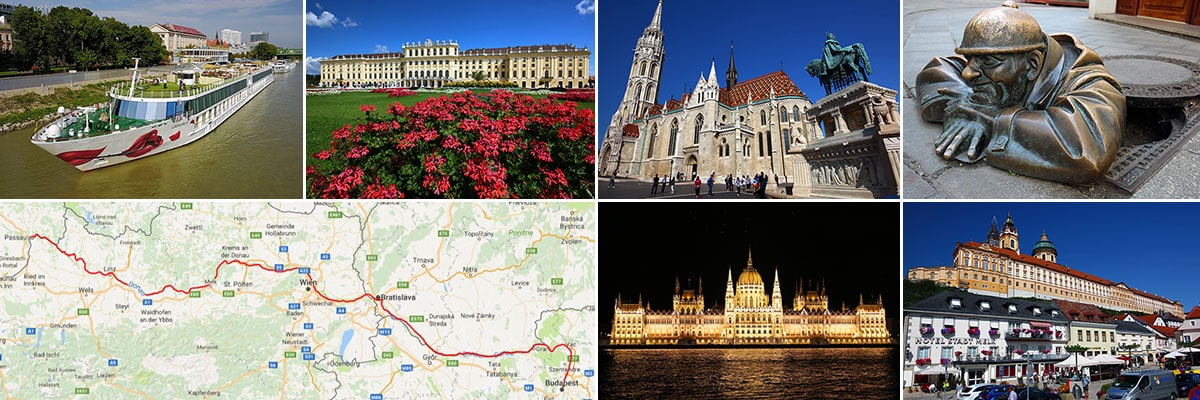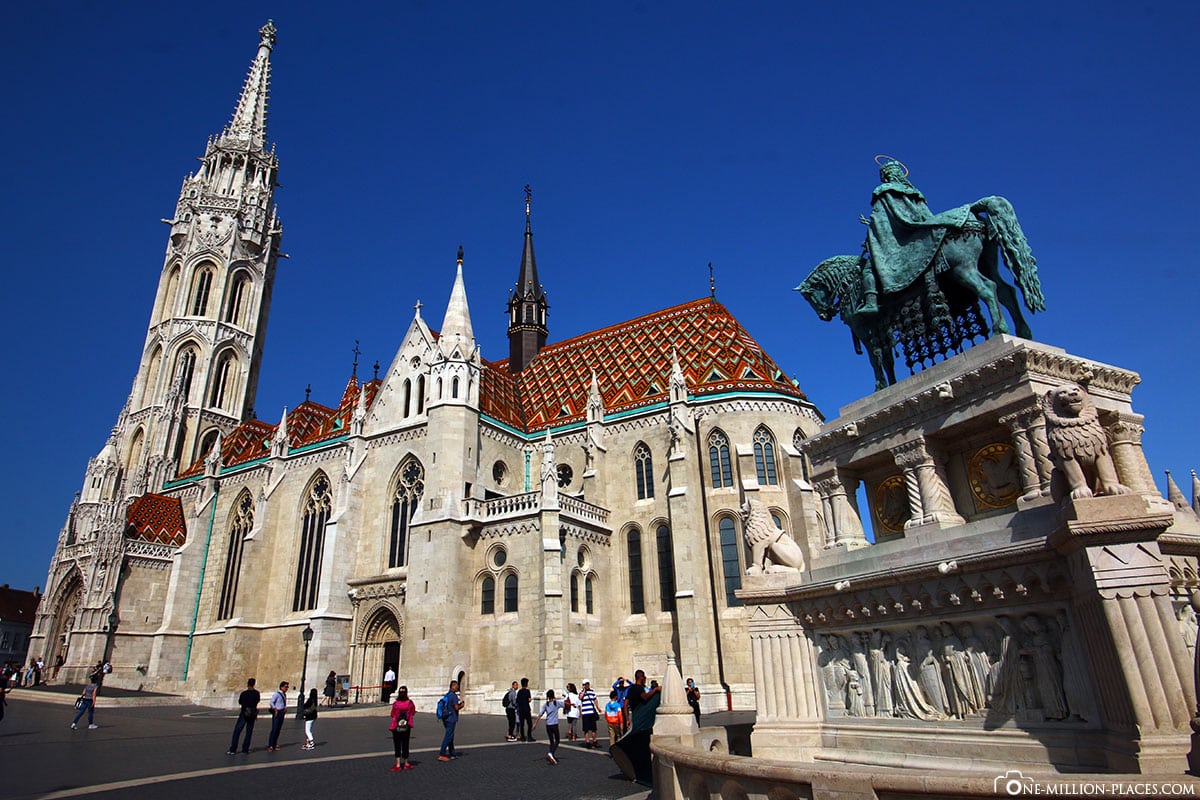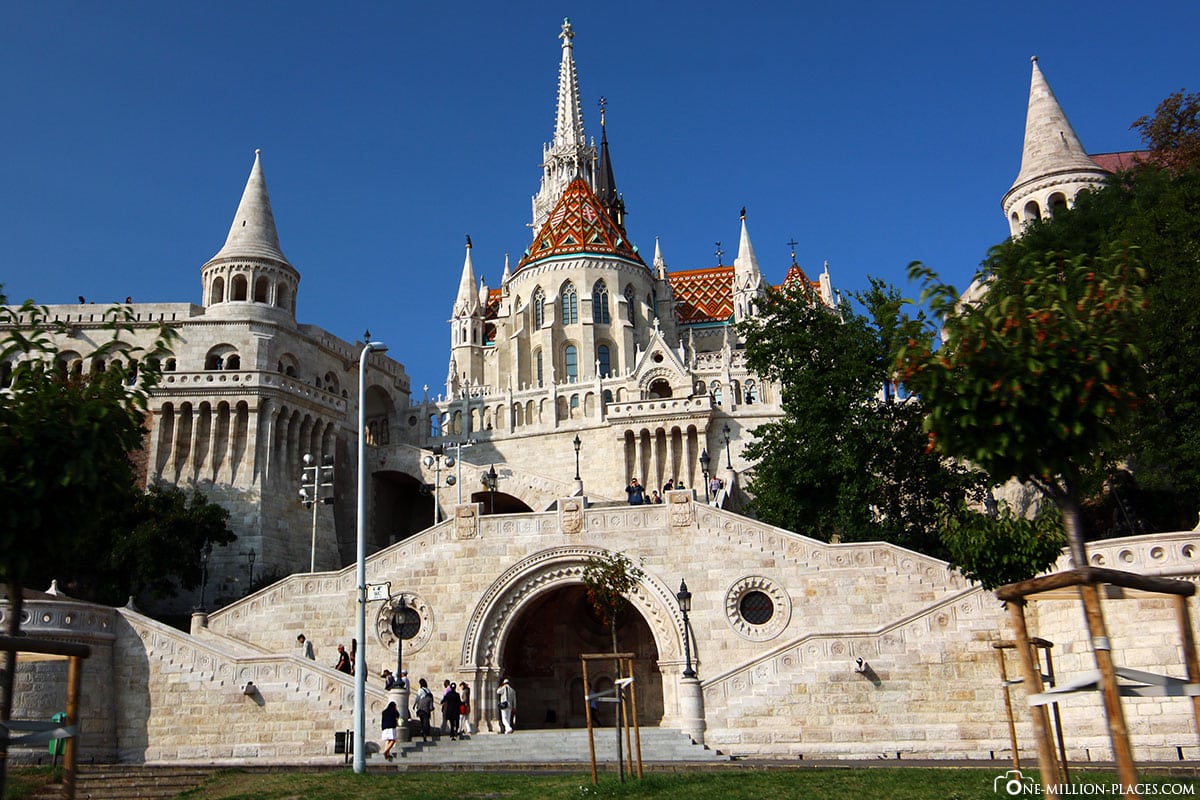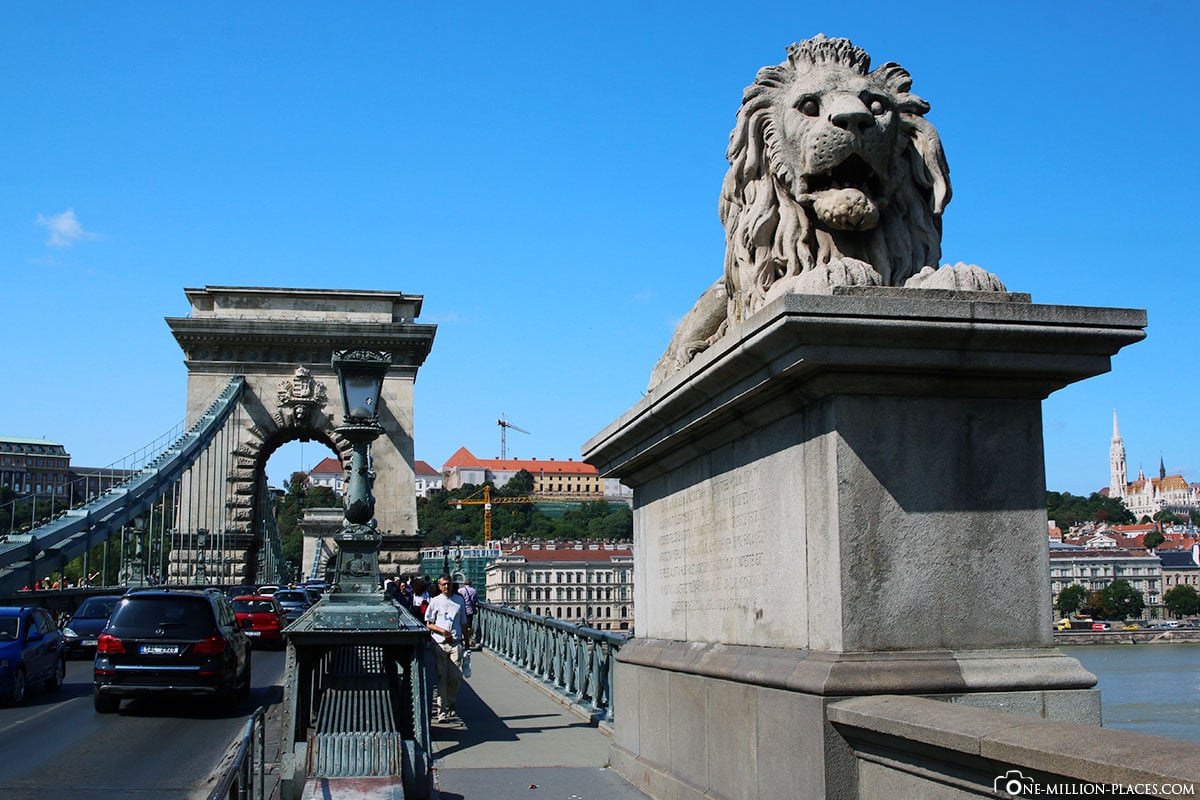After looking at the panorama of Budapest at night last night, we had until 3.30 pm today to explore Budapest with its districts Buda and Pest individually on our own, before our trip continued to Bratislava.

Table of contents
Things to know about Budapest
Budapest is the capital of Hungary and has been a member of the EU since May 2004. However, the national currency is not the euro, but the Hungarian forint (HUF).
The city of 1.7 million inhabitants was created in 1873 by the merger of three formerly independent cities: on the eastern side of the Danube lies the commercial, vibrant district of Pest, which occupies two thirds of the city area and on the western, somewhat hilly side, the districts of Buda and Buda. Since 1987, many different buildings, palaces, churches, bridges, thermal baths and squares have been part of the UNESCO World Heritage Siteon both the Budaer and Pestside. The beautiful panorama is certainly one of the most impressive in the world. The most important sights and most famous buildings of the city, such as the castle palace, the fisherman’s bastion or the parliament building stand on the banks of the Danube, which is spanned by nine bridges. Since Budapest is tectonically located on a fracture, there are especially many thermal springs here. There are said to be well over 80 thermal springs or wells here, which emit more than 70 million litres of water per day.
Hotel Gellért & the funicular Railway Budavéri Siklé
Since we had planned a lot for today, we left early in the morning with the aim of exploring the most important and famous sights of the Hungarian capital. The map of the Budapest Big Bus Tour gives a very good overview here and served as a guide for the city exploration. The berth of our ship from A-ROSA was directly at the Freedom Bridge on the Pest side. Since we wanted to explore the Buda side today, we walked over the Freedom Bridge to the imposing four-star Hotel Danubius Hotel Gellért. In its building is also the Art Nouveau Gellértbad, which is the most famous thermal bath in Budapest.
From here we travelled by tram along the Danube. We got off at the foot of the castle hill at Clark’s square, right next to the famous funicular Budavri Sikl . Here is also the 350 meter long Burgberg tunnel. From Clark’s square you can either come to the castle hill by funicular (for the 95 meter long route you pay 4 euros per trip), you can walk the way or take the bus. Since we bought a 24-hour ticket for public transport the night before (for a cheap 5.50 euros per person), the decision was easy: we took the bus 🙂
The Castle Palace on the Burgberg
Once we arrived at the top we looked at the castle district, which is at least 1.5 kilometres long and has been a UNESCO World Heritage Site since 1987. The highlight here is definitely the castle palace,which towers over the city. Today it houses the National Gallery, the Historical Museum and the National Library. Between the 13th and 20th centuries, the palace was completely destroyed three times, but was built again and again in the style of the respective epoch. From the outdoor terraces you have a beautiful view of the Danube and the Pestside behind it.
The Matthias Church (Coronation Church)
A subsequent tour through the castle district led us to the Matthias Church and the Fischerbastei. The Matthias Church is the most famous church in Budapest and also known as the Coronation Church, as many Hungarian kings were crowned here, such as In 1867 Empress Elisabeth (“Sissi”) and her husband Emperor Franz Joseph. The present church was built between 1255 and 1269 and is immediately noticeable because of its very unequal towers. On the left is the small Béla Tower, decorated with colorful bricks, and on the right side of the nave the 80 meter high, octagonal Matthias Tower. On the complete church roof you will find colourful majolica tiles – this reminded us visually a little of St. Stephen’s Cathedral in Vienna.
The Fisherman’s Bastion
In the immediate vicinity is the Fisherman’s Bastion, from which you also have a great view of the city and the parliament and which is also a UNESCO World Heritage Site. The Bastei is a neo-Romanesque complex and was designed and then built by a Hungarian architect at the end of the 19th century. With its corridors, arcades and towers, it is a most popular photo motif and even when we were here, crowds of tourists flocked here. By the way, the name Fischerbastei is meant to remind of a fishing guild that used to have to secure and defend this section of the fortification wall at the site.
By now it was already late morning and we had to hurry up so that we could see all the sights of the Pest side of Budapest. So nothing like pure in bus and tram and over the Chain Bridge with its ancient triumphal arches to the other side of the Danube 🙂
The sights of the Pest page can be found in this post.
Starbucks Global Icon City Mug of Budapest
We are collecting the Starbucks Mugs from the cities and islands we visit on our travels. Unfortunately, not every city that has a Starbucks store with an own mug. But if the city has an own mug we like to collect them as a souvenir. We only collect city mugs from the "Global Icon Series", which was released in 2008. You can see our complete collection here: Starbucks - Our collection of Mugs from the Global Icon SeriesBudapest has several Starbucks stores and also its own cup 🙂
All travelogues from our Donau River Cruise
A-ROSA offers various river cruises on the Danube with different durations and destinations depending on the season. We had deliberately chosen the 7-day route "Danube Classic - On calm waters through the waves of European history", as this route connects the big metropolises (with sufficient mooring time), natural highlights and UNESCO world heritage sites - a perfect combination for us. The route with the "A-ROSA Bella" took us from Engelhartszell, via Vienna, Esztergom, Budapest, Bratislava and Melk back to Engelhartszell and Passau. » Austria: A-ROSA - 7 days river cruise on the Danube
» Austria: A-ROSA - 7 days river cruise on the Danube» Austria: Vienna – Tourist Attractions, Things to do & Photo spots
» Austriah: Vienna – Schönbrunn Palace, Belvedere Palace & Prater
» Hungary: Danube Knee, Esztergom, Visegrid and Szentendre
» Hungary: Budapest – Travel Guide & beautiful photo spots at night
» Hungary: Budapest – Tourist Attractions & Things to do on the Buda site
» Hungary: Budapest – Tourist Attractions & Things to do on the Pest side
» Slowakia: Bratislava – Tourist Attractions, Things to do & Photo spots
» Austria: Wachau – World Heritage Site on the Danube & Melk Abbey
» Germany: Passau - Tourist Attractions, Things to do & Photo spots



